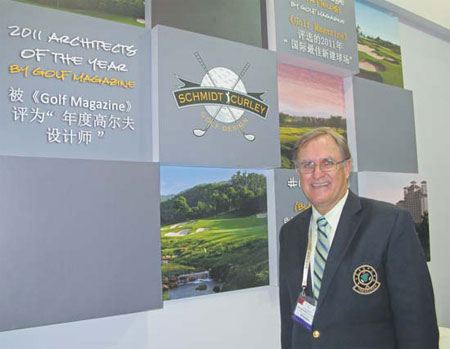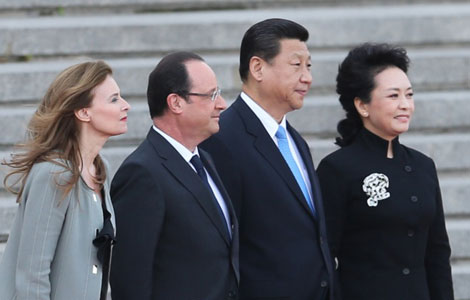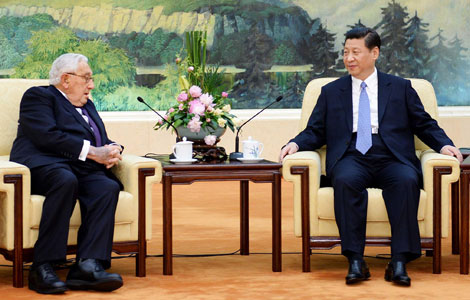Forces for courses
Updated: 2013-04-26 09:06
By Yao Jing (China Daily)
|
||||||||
|
Compared with the rest of the world, there is still a frenzy of golf course building in China. Provided to China Daily |
|
Lee Schmidt says his company has designed 40 golf courses in China. Yao Jing / China Daily |
After 20 busy years in China, the golf course design and construction industry is beginning to take things at a more leisurely pace
When Lee Schmidt started designing golf courses in China nearly 20 years ago, the first one in the country, Zhongshan Hot Springs, had just opened in Guangdong province.
"I was a senior design associate with Nicklaus Design, and I joined in the design work of the project," says Schmidt, who would later form the United States-based Schmidt-Curley Design with business partner Brian Curley, in 1997.
There are now 40 Schmidt-Curley designed courses in China, in addition to 110 in 24 other countries.
However, the seemingly boundless growth that those figures for China suggest may finally be tapering off.
The China Golf Industry Report of 2012, published by Forward Management Group, a Chinese company that covers all golf-related businesses, says that last year the number of golf courses in the country rose to 587. That represents an increase of 39 courses on the previous year - with a course opening every 10 days - from the 45 courses completed the previous year, and 52 the year before.
That means Schmidt, like many others in the golf course design industry, are going through a rough patch, but the enthusiasm of the designers, many of whom have their roots in the saturated and sagging markets of the US and Europe, seems to be largely undiminished.
|
||||
"But compared with two years ago in the country, it is certainly not as great as it was. Still, China is viewed as the market with the highest ceiling for golf growth and therefore golf course design."
The decline in the number of new courses is partly a product of the diminishing possibilities because of rocketing expansion over the past 10 years, and partly because of stricter government policies, introduced in 2004 to discourage courses in order to protect the environment, avoid bad investments and prevent land speculation.
News reports that often cite a supposed ban on building courses appear not to take account of the opaqueness of the rules and that they are administered at the provincial level.
Whatever the case, the very fact that the number of courses continues to grow belies talk of an outright ban, and designers are far from convinced that the explosion of golf's popularity in China is petering out. There are two figures they often cite for their continued optimism. The first is the number of players in the US, which they put at 30 million, and the second is the number of players in China, 1 million, in a country whose population is four times greater.
"The demand for certain types of courses, such as high-end or private membership clubs, has slowed down some," Trinka says.
Just as the game's aficionados look at population figures to bolster their optimism for the game in China, they also look to 2016, when the Olympic Games will be held in Rio de Janeiro, Brazil, and when golf will make a comeback after an absence of 112 years from the Games. They are looking for that exposure to give the game a worldwide fillip. In China, too, they are pinning their hopes on a growing middle class looking for a healthy outdoor activity.
"As the markets continue to grow and mature, golf course designers have to become more responsive in providing designs that make more economic sense, are more sustainable from a maintenance standpoint and provide a high degree of challenge for golfers of all levels," Trinka says.
Schmidt is also adjusting his marketing strategy in the country.
Most Viewed
Editor's Picks

|

|

|

|

|

|
Today's Top News
Phone bookings for taxis in Beijing
Chinese consumers push US exports higher
Seoul delivers ultimatum to DPRK
Boston bombing suspects intended to attack NYC
No let up in home price rises
Bird-watchers undaunted by H7N9 virus
Onset of flood season adds to quake zone risks
Vice-president Li meets US diplomat
US Weekly

|

|

















